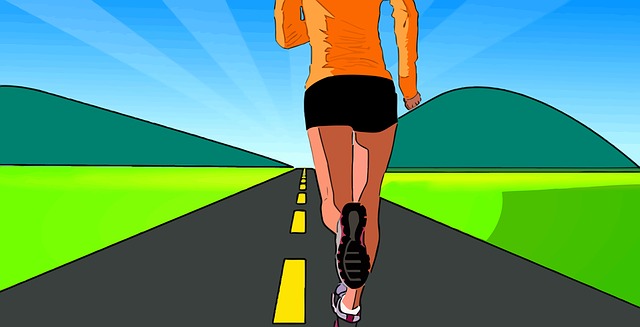The season of various races began a while ago, but we still have time to take one last sprint and reach our goals in running. For this, it will be necessary to establish our objectives and, based on them, define the strategy that we will choose to tackle this great challenge that is to run a Half Marathon.

First of all, we must be clear about our goals both in the short and long term, because if we do not have a realistic goal, we may abandon it because we do not achieve it. We must choose the distance we would like to run and set a date to do it (preferably a race established in the calendar to force ourselves not to change the date). Once that date has been established and being realistic, we must know what our possibilities are and establish a time in which to achieve this objective, this does not need to be done first; we can see how we evolve and establish it later.
Instructions to train Half Marathon
The training that I am going to propose to you consists of 15 weeks in which we will carry out 3 training sessions on 3 different days and leaving a day of rest between them.
We can change the days of training but always trying to leave a day of rest in the middle.
Week 1
- Tuesday -> 50 min jogging + weights (we have talked about the importance of strengthening in order to reach our goal so we must not ignore them) + 2 sprints*
- Thursday -> 20 min jog + 5 X 1000 with 4 min rest between sets + 10 min jog
- Saturday -> 10 min jog + 30 min easy run + 10 min jog + 20 min easy run + 10 min jog = 80 min total non-stop between intervals.
Week 2
- Tuesday -> 60 min jogging + weights
- Thursday -> 20 min jog + 4 X 2000 with 5 min recovery between sets + 10 min jog
- Saturday -> 70 min jog + 4 sprints
Week 3
- Tuesday -> 60 min jogging + weights
- Thursday -> 20 jogging + 10 X 500m with 3:30 min breaks + 10 min jogging
- Saturday -> 15 min jog + 20 min easy run + 5 min fast run + 20 min easy run + 15 min jog = 80 min total
Week 4
- Tuesday -> 20 min jog + 5 X 1000 with 4 min rest + 10 min jog
- Thursday -> 80 min jogging + weights + 3 sprints
- Saturday -> 15 min jog + 40 min easy run + 15 min jog
Week 5
- Tuesday -> 15 min jog + 4 X 3000 with recoveries of 7 min + 15 min jog
- Thursday -> 70 min jogging + weights
- Saturday -> 15 min jog + 30 min easy run + 5 min fast run + 25 min easy run + 15 min jog = 90 min total
Week 6
- Tuesday -> 20 min jog + 10 X 500 with 4 min recovery + 15 min jog
- Thursday -> 15 min jog + 40 min easy run + 15 min jog = 79 min total
- Saturday -> 90 min jogging + weights
Week 7
- Tuesday -> 10 min jog + 6 X 1000 with recoveries of 4 min + 10 min jog
- Thursday -> 35 min jog
- Saturday -> 10 km competition
Week 8
- Tuesday -> 70 min jog
- Thursday -> 15 min jog + 30 min easy run + 15 min jog = 60 min total
- Saturday -> 80 min jog + 5 sprints
Week 9
- Tuesday -> 80 min jogging + weights
- Thursday -> 15 min jog + 5 X 3000 recoveries of 5 min + 15 min jog
- Saturday -> 30 min jog + 15 min easy run + 10 min fast run + 15 min easy run + 30 min jog
Week 10
- Tuesday -> 70 min jogging + weights
- Thursday -> 20 min jog + 10 X 500 recoveries of 2 min + 15 min jog
- Saturday -> 90 min progressive + 4 sprints
Week 11
- Tuesday -> 15 min jog + 3 X 5000 recoveries of 6 min + 15 min jog
- Thursday -> 100 min jog
- Saturday -> 30 min jog + 20 min easy run + 10 min jog + 20 min easy run + 30 min jog = 110 min total
Week 12
- Tuesday -> 70 min jogging + weights
- Thursday -> 15 min jog + 30 min easy run + 15 min jog = 60 min total
- Saturday -> 90 min jog
Week 13
- Tuesday -> 120 min jog
- Thursday -> 15 min jog + 10 X 1000 recoveries of 5 min + 15 min jog
- Saturday -> 15 min jog + 20 min easy run + 10 min jog + 10 min fast run + 10 min jog + 20 min easy run + 15 min jog = 100 min total
Week 14
- Tuesday -> 15 min jog + 4 X 3000 recoveries of 6 min + 15 min jog
- Thursday -> 60 min jogging + weights + 4 sprints
- Saturday -> 105 min jog
Week 15
- Tuesday -> 15 min jog + 10 X 500 recoveries of 2 min + 15 min jog
- Thursday -> 40 min jog + peas + 4 sprints
- Saturday -> Finish a Half Marathon
*When we talk about sprints we mean about 50m (depends on the person and their abilities) as much as we can.
Trot: Very smooth, we can maintain a fluid conversation with another person while running.
Smooth run: We increase the pace compared to the jog, we can still have a conversation but with some difficulty, especially when we are finishing.
Fast run: We increase the pace to values close to our maximum, in this case we will not be able to hold a conversation during the exercise and we will not be able to maintain this pace for more than 10 minutes.
What do you need to train Half Marathon?
Given that the demands of this type of race are quite great, we must bear in mind that our starting level must exceed a minimum before facing such a demanding test. We should be able to run for an entire hour without stopping at an average pace of 6:30 min/km. If our level is below these values, first of all we must work to get here and then we will carry out more specific training.
Tips for training Half Marathon
- Don’t give up. When you start the race you may see the final goal very far away, but if you have come this far you should not give up, the goal is much closer and the satisfaction you will achieve when you finish cannot be compared to anything. Be strong.
- Do not exceed your limits. Only you know how far you can go. Not by going faster you will arrive before, exceeding the effort can end in injury, so pay attention to your body and follow the instructions of the professionals. An injury can mean that you do not achieve your goals and we do not want that.
- Gain strength. To complete a race as tough as this one, your body needs to be in optimal condition to be able to finish without ramps or other injuries. We must work on strength specifically during our training period, not only in the upper body; we must strengthen the whole body to be able to finish the race in the most optimal conditions.
- We must be clear about what our objective rhythm will be since in the last weeks before the competition, this will be the one that marks our training and thus ensure that we will be able to finish the test at that established pace, since we will still have time to modify it..
- It is important that we do not finish the training totally exhausted, that we want more because this will help us to get the motivation to keep going and continue with our workouts.
- Warming up will be a fundamental part of our training, so we must warm up for at least 5 minutes before starting each of our training sessions to raise body temperature and be able to face it in the best conditions.
- This is only a guide that you can follow but it will not have the same effect on all people so you have to take into account the sensations.
- As it is a long-distance race, it would be advisable to pass a medical check beforehand and, if possible, carry out a stress test.
- Last but not least, we must get the right shoes for our feet in relation to our footprint, for this we must contact a professional.
















